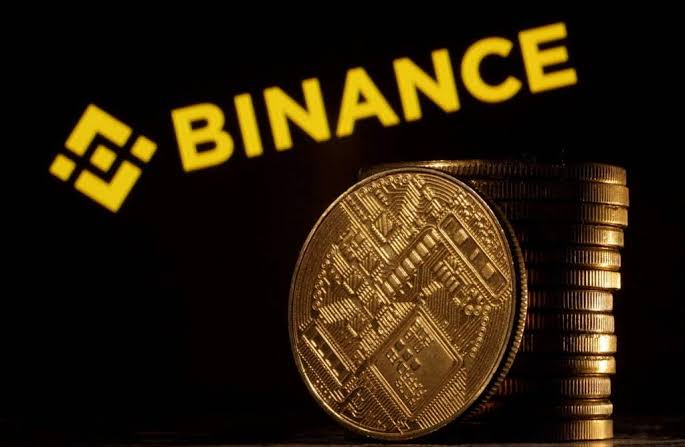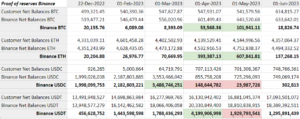
Binance’s Transparent Reserves and USDC Movements
Binance published its most recent proof-of-reserves (PoRs) on August 1, providing transparency into its crypto reserves. However, the movement of its USD Coin reserves at the time of Silvergate’s collapse attracted widespread attention and became a topic of conversation on X (previously Twitter).
The most recent reserve audit indicates that Binance possesses more crypto and cash than is required to cover user funds.
As shown below, the ratio of Binance’s net balances to its customers’ net balances is greater than 100 percent for all of its assets.

Binance asset reserve ratio to customer funds. Source: Binance
While the report indicates that Binance is in a healthy financial position, the USDC reserve movements following the Silvergate collapse and the debugging of the stablecoin were the primary topics of discussion.
The Proof of Reserves demonstrates that Binance’s USDC balance fell from $3.4 billion on March 1 to $23.9 million by May 1. Internally, Binance began converting customer USDC to Binance USD in September, though it also held a significant quantity of USDC at the time.

Binance reserves balance between December 2022–June 2023. Source: Binance
On-chain data indicates that immediately following the collapse of Silvergate on March 12, Binance began converting its USDC reserves into Bitcoin and Ether.
Twitter on-chain analyst Aleksandar Djakovic noted that Binance purchased approximately 100,000 BTC and 550,000 ETH between March 12 and May 1 for a total of approximately $3.5 billion, the same quantity of USDC I had in excess.
Binance’s USDC reserves have become a heated topic after Coinbase CEO Brian Armstrong joked during the company’s Q2 earnings call that Binance had sold USDC for another stablecoin.
After the demise of the FTX cryptocurrency exchange, PoRs have become a popular method for crypto exchanges to attest their holdings and share them with the public as a means of transparency.
In November 2022, FTX collapsed despite its founders’ claims that its financial situation was well-balanced. As a result, calls for greater transparency within the cryptocurrency ecosystem increased.





